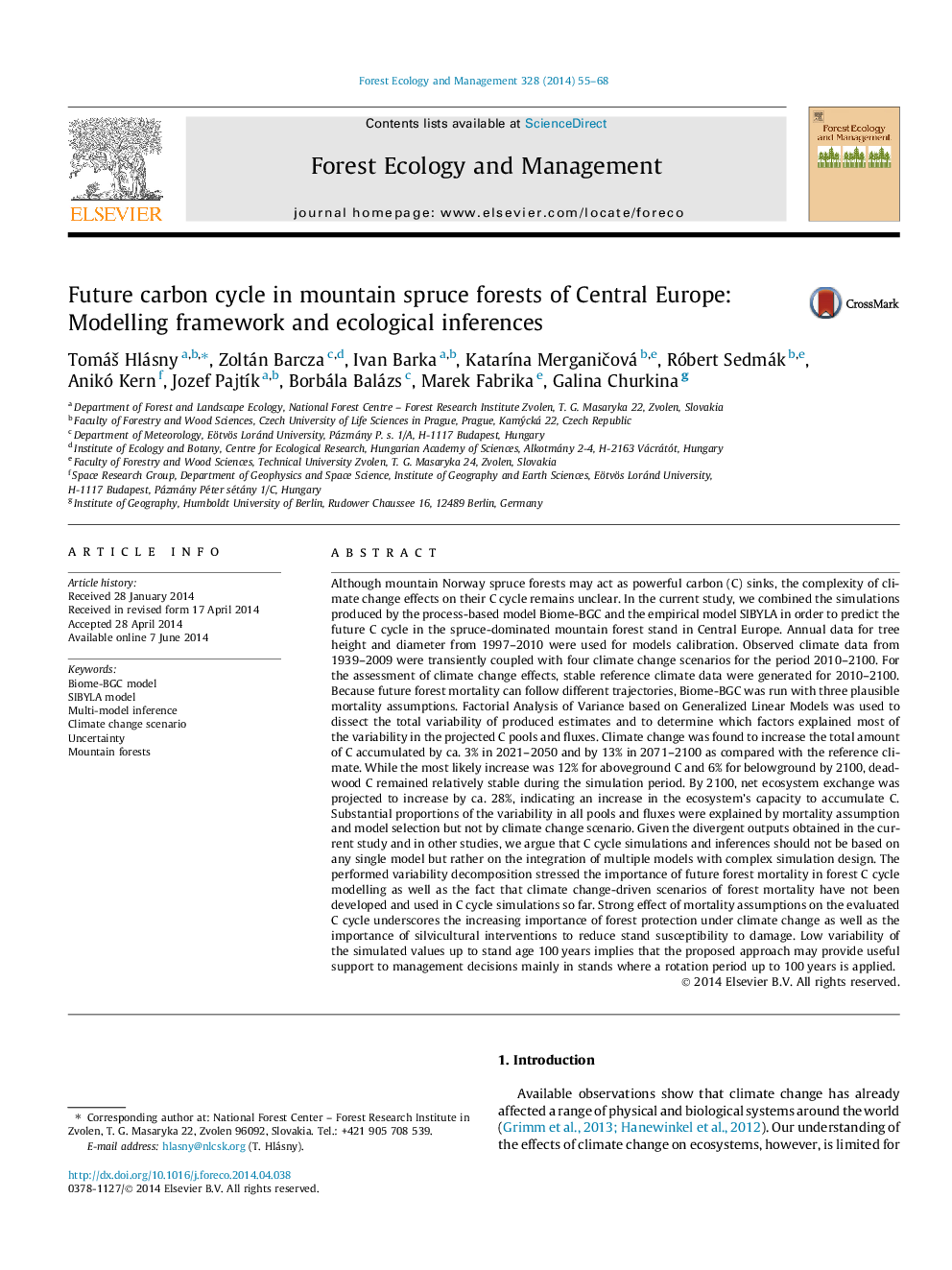| کد مقاله | کد نشریه | سال انتشار | مقاله انگلیسی | نسخه تمام متن |
|---|---|---|---|---|
| 86505 | 159194 | 2014 | 14 صفحه PDF | دانلود رایگان |
• The future carbon cycle of mountain Norway spruce stand was addressed.
• A modelling framework based on the integration of Biome-BGC and empirical model SIBYLA was proposed.
• We found out an increase in carbon accumulation by ca 13% by the end of the century.
• A difference in models and mortality assumptions explained most of the variability of carbon cycle estimates.
• A usefulness of the proposed approach for forest management is discussed.
Although mountain Norway spruce forests may act as powerful carbon (C) sinks, the complexity of climate change effects on their C cycle remains unclear. In the current study, we combined the simulations produced by the process-based model Biome-BGC and the empirical model SIBYLA in order to predict the future C cycle in the spruce-dominated mountain forest stand in Central Europe. Annual data for tree height and diameter from 1997–2010 were used for models calibration. Observed climate data from 1939–2009 were transiently coupled with four climate change scenarios for the period 2010–2100. For the assessment of climate change effects, stable reference climate data were generated for 2010–2100. Because future forest mortality can follow different trajectories, Biome-BGC was run with three plausible mortality assumptions. Factorial Analysis of Variance based on Generalized Linear Models was used to dissect the total variability of produced estimates and to determine which factors explained most of the variability in the projected C pools and fluxes. Climate change was found to increase the total amount of C accumulated by ca. 3% in 2021–2050 and by 13% in 2071–2100 as compared with the reference climate. While the most likely increase was 12% for aboveground C and 6% for belowground by 2100, deadwood C remained relatively stable during the simulation period. By 2100, net ecosystem exchange was projected to increase by ca. 28%, indicating an increase in the ecosystem’s capacity to accumulate C. Substantial proportions of the variability in all pools and fluxes were explained by mortality assumption and model selection but not by climate change scenario. Given the divergent outputs obtained in the current study and in other studies, we argue that C cycle simulations and inferences should not be based on any single model but rather on the integration of multiple models with complex simulation design. The performed variability decomposition stressed the importance of future forest mortality in forest C cycle modelling as well as the fact that climate change-driven scenarios of forest mortality have not been developed and used in C cycle simulations so far. Strong effect of mortality assumptions on the evaluated C cycle underscores the increasing importance of forest protection under climate change as well as the importance of silvicultural interventions to reduce stand susceptibility to damage. Low variability of the simulated values up to stand age 100 years implies that the proposed approach may provide useful support to management decisions mainly in stands where a rotation period up to 100 years is applied.
Journal: Forest Ecology and Management - Volume 328, 15 September 2014, Pages 55–68
